
History of the Lab
Florida State University established its first marine laboratory, the Oceanographic Institute, in 1949 on 25 acres on the harbor side of the peninsula that forms Alligator Harbor, about 45 miles south of Tallahassee.
The Oceanographic Institute maintained a substantial research effort throughout the 1950s and 1960s. The research conducted by the faculty and graduate students was intended to be interdisciplinary, balancing fundamental investigations of the productivity of tropical continental-shelf waters in the northeastern Gulf of America with applied research on practical problems of the commercial and sport fisheries and the use of other marine resources.
In addition to the laboratory building—divided into a wet laboratory classroom and a room of research cubicles for use by staff, faculty, and graduate students—facilities included large concrete seawater tanks for keeping marine animals, a large pool (70 x 50 ft, 7 ft deep) constructed in 1954 to keep dolphins, a faculty residence building, a boathouse-shop, and a 300-foot concrete pier for docking small boats. The laboratory was equipped with five power boats (22 to 38 ft) and several skiffs.
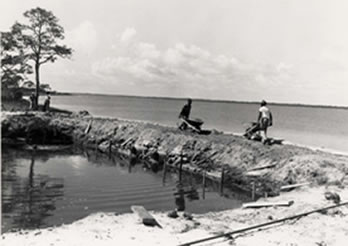
Other marine stations maintained by Florida State University until 1954 included one at Mayport, on the St. Johns River near Jacksonville, which conducted research related to the menhaden and shrimp fisheries and oceanographic problems of the Gulf Stream and the mouth of the St. John's River, and one on Mullet Key at the mouth of Tampa Bay which studied red tide.
In 1966, FSU formed the Department of Oceanography on campus, and the Oceanographic Institute was closed. A new facility was built across the harbor and further to the west on land donated to Florida State University by Ed Ball, President of the St. Joe Paper Company. This facility opened in 1968 and was known as the Edward Ball Marine Laboratory.
Past Directors of the FSU Oceanic Institute
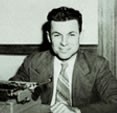 Director from 1955-1961
Director from 1955-1961
Ph.D. California Institute of Technology (1940)
Areas of expertise: botany, economics of marine algae, seaweed systematics
Dr. Humm was a leading authority on algae, marine bacteriology, and land-plan ecology and taxonomy. At least 11 new species of marine algae, diatoms, and invertebrate animals were named in his honor. He was the first Resident Director of the Duke Marine Laboratory, Beaufort, NC (1948-49); founding Director of the Oceanographic Institute of Florida State University (1949-1954); visiting scientist at Woods Hole Oceanographic Institute (1959); Jacques Loeb Associate in Marine Biology, Rockefeller Institute (1959-60); and founding Director of the University of South Florida Institute of Marine Science (1967-1974). He also was the mentor of Dr. Sylvia Earle, National Geographic Explorer.
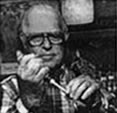 Director from 1949-1954
Director from 1949-1954
Ph.D. Duke University (1945)
Dr. Fox was perhaps best know for his groundbreaking work on the origin of life, in seminal experiments conducted in the 1960s on the synthesis of thermal proteins from amino acids, and for his demonstration that these proteins, when placed in water, spontaneously self-organize into structures, known as microspheres, that resemble primitive cells. On three occasions he was invited to the Vatican to explain the results of his work to the Pope.
At the behest of NASA, Fox left the institute to take the position of director of the Institute of Bioscience at Florida State (1961-1964) before moving to the University of Miami to become director and professor of its Institute of Molecular and Cellular Evolution (1964-1989). In 1989, he became distinguished research professor in the Department of Plant Biology at Southern Illinois University and since 1993 has been distinguished research scientist in the Department of Marine Sciences at the University of Southern Alabama.
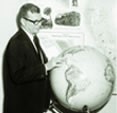 Director from 1962-1964
Director from 1962-1964
Ph.D.
Collier worked for several federal agencies and taught at Florida State University and the University of Arizona between 1933 and 1982. He was a key player in a 1946 investigation of the role of petroleum production in increased Gulf Coast oyster mortalities, during which he and the other investigators discovered a new parasite and its potential damage to oysters.
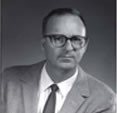 Director from 1964-1968
Director from 1964-1968
Ph.D. University of California, San Diego (Scripps Institution of Oceanography) (1961)
Areas of expertise: marine microbial ecology, geomicrobiology, marine bacteriology, petroleum microbiology and pollution, oceanography, general ecology, coastal zone management, microbiological pollution control, microbial enhanced oil recovery, bioremediation. He is known to be one of the world's founding fathers of bioremediation.
Oppenheimer received Fulbright Fellowships to both Norway and Italy, then returned to Scripps as an Assistant Marine Biologist. He then moved to the Pan American Petroleum Corporation Research Center before heading to the University of Texas Marine Science Institute in Port Aransas. In 1961, he joined the faculty of the Institute of Marine Science, University of Miami. From there, he moved to Florida State University, where he was a professor in the departments of Biological Science and of Oceanography. Dr. Oppenheimer served as the last director of the Oceanographic Institute (1964-1968) and the first director of the Edward Ball Marine Laboratory (l968-l97l).
In 1971, he returned to the University of Texas, where he remained for the rest of his career. In addition, he served as Vice President for Research and Development at the Alpha Environmental Corporation in Austin, Texas, and later established his own company, Oppenheimer Environmental Company.
 Director from 1971-1974
Director from 1971-1974
Ph.D. Rice University, Houston (Geochemistry)
Areas of expertise: chemical oceanography, including the distribution of iron and manganese in the sea, and the ecological implications of mercury pollution in aquatic systems.
Harriss served as director of the FSU Marine Laboratory from 1971 through 1974. Before accepting his current post as a Senior Scientist at the Institute for the Study of Society and the Environment of the National Center for Atmospheric Research, Boulder, CO, he served as Professor (adjunct) Department of Planning and Design, College of Architecture and Planning, University of Colorado; Professor (adjunct) Department of Marine Sciences, Texas A&M University at Galveston; and Principal Scientist, The Institute for Oceans and Coasts.
Dr. Harriss has previously served as Director of the Institute for the Study of Society and Environment of the National Center for Atmospheric Research, Director of the Sustainable Enterprise Institute of the Texas Engineering Experiment Station; holder of the Wiley Chair in Civil Engineering; and Director, Science Division, Mission to Planet Earth, NASA headquarters.
Awards include fellow of the American Association for the Advancement of Science, Harvard University Fellowship, and NASA's Exceptional Scientific Achievement and Outstanding Leadership Medals.
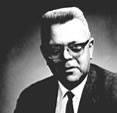 Director from 1974-1978
Director from 1974-1978
Ph.D. Texas A&M University (1954)
Areas of expertise: mollusc biology
Winston Menzel spent his entire professional career at Florida State University, where he concentrated on molluscan aquaculture and genetics. His research ranged from projects in selective breeding and hybridization in clams and oysters to clam mariculture. He is noted for developing a management plan for the oyster resource in Apalachicola Bay with the Florida State Board f Natural Resources. Much of this body of work is extremely relevant to the Apalachicola Bay System Initiative currently being conducted at the lab in 2020.
Past Directors of the FSU Edward Ball Marine Laboratory
 Director from 1978-1980
Director from 1978-1980
Professor Emeritus (Pharmacology), University of Florida
Ph.D. Harvard University (1958)
Areas of expertise: molluscan pharmacology, osmotic regulation, and echinoderm regeneration
Dr. Greenberg started at FSU in the Department of Biological Science in 1964, where he taught general (cell) physiology and comparative physiology. The range of his students' research and collection sites led Greenberg to establish, in 1969, The Tallahassee, Sopchoppy, & Gulf Coast Marine Biological Association of which he is still president.
Greenberg left FSU in 1981 to become Director of the Whitney Laboratory, University of Florida. During his tenure, the Whitney increased in size and population, an effective board of trustees was established, and in Greenberg's lab, many invertebrate neuropeptides were discovered and their effects investigated. The latter efforts were supported by a MERIT award, in 1986, from the National Institutes of Health. Greenberg retired from the directorship in 1996, from the University in 2001, and in 2004, from editorship of the Biological Bulletin.
During his tenure as FSUML Director, Greenberg oversaw a complete renovattion of the lab; obtained funding for and purchased a package of general use equipment that facilitated teaching at the lab; initiated (in 1978) the 15-credit-hour course Experimental Marine Biology, which met all day, five days per week, for a full 10-week quarter (students and instructors lived in the lab's dormitories); and directed the FSU scientific diving program and its staff.
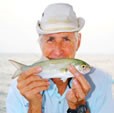 Director from 1980-1985
Director from 1980-1985
Robert K. Godfrey Professor Emeritus, Department of Biological Science, Florida State University
Ph.D. University of Miami (1968)
Areas of expertise: enzyme structure, function, and evolution
While director of the FSUML, Bill Herrnkind designed, initiated (1984), hosted, and secured grant funding for the "Saturday-At-The-Sea" educational outreach program (in collaboration with Dr. Patricia C. Hayward, founder of FSU's Office of Science Teaching Activities). In 1981, he acquired the R/V Seminole (captured by U.S. Customs in a drug bust), secured funds to upgrade it, and oversaw its renovation into to a serviceable research platform (from 1977, when FSU's lease on the R/V Tursiops ended, until acquisition of the Seminole, the lab had only outboard skiffs and pontoon boats). He also Acquired terminal and linkage to the FSU campus main-frame computer, bringing the first computer access to FSUML (before the age of desktops). In response to a burglary/assault threat on a student assistant staying overnight, he established round-the-clock security personnel, a barrier fence, and expanded outdoor lighting. He taught summer and residence courses at FSUML; initiated and promoted the development of the Academic Diving Program as a science-diver training, research, and graduate service operation providing free use of SCUBA and instrumentation as well as safety oversight; and oversaw the first on-site Marine Lab "Open House" for FSU faculty, staff, students, and friends thereof.
Dr. Herrnkind currently serves as an FSUCML docent.
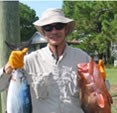 Director from 1985-1989
Director from 1985-1989
Michael J. Greenberg Professor of Biological Science
Ph. D. University of Rhode Island (1976)
Areas of expertise: enzyme structure, function, and evolution
Dr. Ellington's research while at FSU included development of a federally funded research program focused on the structure, function, and evolution of a family of phosphoryl transfer enzymes. Ellington served as Associate Vice President for Research and Vice President of the FSU Research Foundation and was a faculty member in the Department of Biological Science from 1981-2020. In addition to his service as FSUCML director, he served as Director of the Institute of Molecular Biophysics and Structural Biology Program from 1997 through 2005. Ellington served as Associate Vice President for Academic Affairs prior to joining the Office of the Vice President for Research.
Ellington was instrumental in developing the research proposal funded by the Triumph Fund in 2019, The Apalachicola Bay System Initiative.
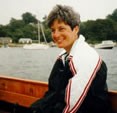 Director from 1989-2001
Director from 1989-2001
Robert O. Lawton Distinguished Professor and Mary Sears Professor of Oceanography
Ph.D. Yale University (1976)
Areas of Expertise: ecology and evolutionary biology, centering on dormancy as part of the life cycle in marine copepod species
Marcus started her career at the Woods Hole Oceanographic Institution, as a Postdoctoral Fellow for two years and then as a member of the scientific staff for nine more. She moved to the Florida State University Department of Oceanography in 1987.
In addition to her responsibilities as a professor and as FSUML Director, she served as Director of the Women in Math, Science, and Engineering program and Chair of the Department of Oceanography. These roles led to her to take on a new challenge in August 2005, Dean of Graduate Studies.
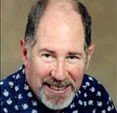 Director from 2001-2005
Director from 2001-2005
Professor, Department of Oceanography, Florida State University
Ph.D. Oregon State University (1972)
Areas of expertise: physiology and ecology of marine phytoplankton
During his tenure as director, Iverson significantly upgraded the FSUML infrastructure. For example, he secured and oversaw installation of a 5000-square-foot modular building; a fiber optic Internet cable throughout the FSUML research, education, and maintenance buildings; and server and new personal computers for all staff members (permitting direct communication with FSU's main campus). via the Internet.
He also replaced the antiquated telephone system, including complete rewiring throughout FSUML research, education, and maintenance buildings; refurbished the RV Seminole (replacing the electrical system, installing a new winch, replacing the radar/sounding system with an advanced unit, and replacing the life rafts); re-engined the small-boat fleet; and arranged for reroofing of the nonresidential FSUML buildings.
Past Directors of the FSU Coastal & Marine Laboratory
 Director from 2006-2020
Director from 2006-2020
Full Research Faculty, FSUCML & Biological Science
Ph.D. Florida State University (1991)
Areas of expertise: species-habitat interactions and the effects of exploitation; fisheries & habitat management
Dr. Coleman developed & directed (15 yrs) a Marine Biology Program in the Biology Department providing professional development and research internships for undergrads. Her variety-funded research in conservation & management led her to serve on relevant panels with the Gulf of America Fishery Management Council, the National Academy of Science, The Pew Charitable Trusts, and Lenfest, among others. She is a Pew Fellow in Marine Conservation & an Aldo Leopold Conservation Fellow.
During her tenure as director, the research facility geared for campus-based and visiting scientists shifted to become a research institution in its own right, with seven resident faculty. She changed the lab's name to reflect a new research focus on the connectivity between land and sea. Coleman streamlined operations to increase efficiency and moved the Dive Program from the main campus to the lab at considerable cost savings. She worked closely with donors to bring a closed seawater system, weather station, outdoor classroom, a research boat, and several funds for graduate student research. She worked with architects to build a 63-ft research vessel (c. 2013) and develop plans for new research buildings.

